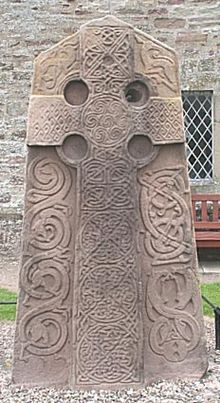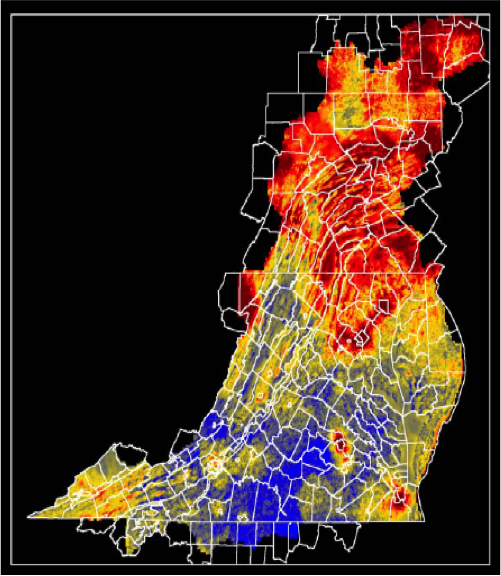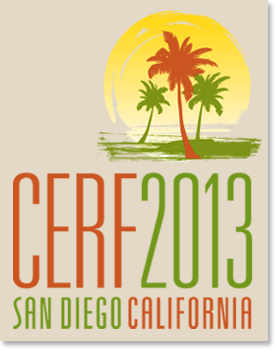Chesapeake Community Modeling Program
CCMP Newsletter | October 2013
Volume 6, Issue 3
Introduction
Hello! CCMP is pleased to announce that the next Chesapeake Modeling Symposium will take place May 28 and 29, 2014 in Annpolis, MD. More information about the Symposium can be found below. Please enjoy this edition and, as always, please contact Dave Jasinski if you have any questions or comments. Also, please feel free to contact us if you have any ideas for future content.

Contents
1. CCMP News in brief
2. Open Source On the March
3. Featured Modeler: John Jacobs
4. Featured Model: CMAQ
5. Upcoming Meetings
1. CCMP News in Brief
Chesapeake Modeling Symposium 2014
 Chesapeake Modeling Symposium 2014 will take place May 28 & 29, 2014 in Annapolis, MD. The Symposium theme is "Chesapeake Frontiers: Modeling the watershed, estuary, living resources and the socio-economic system". We are planning two full days of plenary talks, panel discussions and presentations.
Chesapeake Modeling Symposium 2014 will take place May 28 & 29, 2014 in Annapolis, MD. The Symposium theme is "Chesapeake Frontiers: Modeling the watershed, estuary, living resources and the socio-economic system". We are planning two full days of plenary talks, panel discussions and presentations.
The CCMP is currently accepting proposals for special sessions. All topics that fall within the workshop theme will be considered. We are particularly interested in sessions devoted to interactions between the watershed and estuarine water quality and living resources. Deadline for submission of proposals is November 15, 2013. Please limit proposals to 1000 words or less. Email proposals to - dave@communitymodeling.org.
For more information, please visit the symposium website - www.chesapeakemeetings.com/CheMS2014/. Here you can check out the scope and aims of the symposium and deadlines for abstract submission and registration. The agenda and list of participants will also be posted when they are available.
A Better Hypoxia Estimate
CCMP steering committee members Marjy and Carl Friedrichs are co-authors on a paper with Marjy's former student Aaron Bever that summarizes their efforts to better characterize the volume, extent, and duration of hypoxia in Chesapeake Bay. The team used the Chesapeake Bay Program's almost 30 year data set and multiple hydrodynamic models. They found that the current monitoring design of sampling stations twice per month during the summer potentially increases the uncertainty about the extent of hypoxia at any given time by 25 to 50%. Their findings indicate that hypoxia might be better charcterized by sampling fewer stations more often. You can read more about the study here - www.vims.edu/newsandevents/topstories/dead_zone_volume.php
Integrative Graduate Education and Research Traineeship
An NSF IGERT (Integrative Graduate Education and Research Traineeship) program on Water, Climate and Health
2. Open Source on the March
GNU is 30
 The GNU project was announced on September 27, 1983 by Richard Stallman who was then working at MIT. Stallman wanted to create an open source operating system. GNU is a "Unix-like" operating system. Current versions of GNU run on the Linux kernal. For more information, check out www.gnu.org
The GNU project was announced on September 27, 1983 by Richard Stallman who was then working at MIT. Stallman wanted to create an open source operating system. GNU is a "Unix-like" operating system. Current versions of GNU run on the Linux kernal. For more information, check out www.gnu.org
Open Source Archeology
 Sometime around the year 800, a society known as the Picts erected an intricately carved stone monument near the eastern coast of the Scottish Highlands. Over the years, thousands of pieces of the monument have chipped off. Archeologists are interested in putting all of these pieces back together, in what amounts to a giant jig-saw puzzle. Interestingly, they want to crowd-source the effort. To do this, they have generated 3d images of all the pieces and developed a web interface that will allow anyone to try their hand at putting the monument back together. Once a user finds two pieces that potentially fit together, it will be up to the internet community to vote on whether or not it is a good fit. The site will be launched October 25, 2013 - www.pictishpuzzle.co.uk
Sometime around the year 800, a society known as the Picts erected an intricately carved stone monument near the eastern coast of the Scottish Highlands. Over the years, thousands of pieces of the monument have chipped off. Archeologists are interested in putting all of these pieces back together, in what amounts to a giant jig-saw puzzle. Interestingly, they want to crowd-source the effort. To do this, they have generated 3d images of all the pieces and developed a web interface that will allow anyone to try their hand at putting the monument back together. Once a user finds two pieces that potentially fit together, it will be up to the internet community to vote on whether or not it is a good fit. The site will be launched October 25, 2013 - www.pictishpuzzle.co.uk
3. Featured Modeler
 Fisheries Research Biologist
Fisheries Research Biologist
NOAA/NOS/NCCOS/Oxford Lab
Oxford, MD 21654
Education:
B.A., 1992, Biology, St. Mary’s College of Maryland
M.S., 1998, Fisheries, University of Maryland, College Park
Ph.D., 2007, Fisheries, University of Maryland, College Park
Ph.D., 2012, Civil Engineering, Pennsylvania State University
John Jacobs is a fisheries research biologist at the NOAA Oxford Laboratory. His research interests include ecological forecasting, which (in John’s case) involves studying the environmental determinants of the distribution and abundance of pathogenic bacteria; the development of quantitative molecular tools for identifying and quantifying these bacteria; and the formulation of ecological models that can be used to forecast their occurrence. This work also includes the development of national scale observational networks and data delivery systems that are needed to provide the data for these efforts. In addition, John’s interests include fish health and physiology and, specifically, the ecology of disease in finfish and the interaction of nutrition and disease. This work has involved the development of methods for nutritional health assessment and the use of fish as bio-indicators of ecosystem health to assess, for example, the influence of land use on aquatic ecosystems.
Much of John’s current efforts are focused specifically on NOAA's recent push to develop operational ecological forecasts for US coastal and inland waters. Among other things, he is leading a team of NOAA scientists and managers to develop national scale Vibrio spp. forecasts and secondary products using NOAA's Operational Forecast System as the computational backbone. This effort is using essentially the same modeling approach and tactics of engaging stakeholders, identifying data gaps, etc. that was pioneered in Chesapeake Bay. All of this requires an observational network for quantifying variability in both the target organisms (e.g., Vibrio spp.) and environmental parameters that drive this variability for model development, validation, and data assimilation. At present, John is working actively with Delaware scientists and managers to get an ecological forecasting system in place that is similar to the one in Chesapeake Bay.
4. Featured Model: CMAQ
Our featured model this issue is the Community Multi-scale Air Quality Model (CMAQ). CMAQ has been used by the EPA, National Weather Service, and individual states since 1998 to model air pollution, forecast ozone, and develop scenarios for air quality managment. CMAQ brings together meteorological, pollution emission, and an air chemistry-transport model. CMAQ is in use world wide and EPA draws upon this user community for input on how to continually update and improve the model.
 |
| Output from the CMAQ air pollution model showing nitrate and ammonia deposition in the Chesapeake watershed. |
In 2011, a new version of CMAQ was released which represents a significant leap forward in air chemistry modeling. The previous version operated on an hourly time step with the component models running sequentially. Version 5.0 runs on a minute time step with the meteorology and air chemistry-transport models coupled. This provides more accurate forecasts reflecting the interaction between pollution and the weather. The CMAQ model is part of the Chesapeake Bay modeling system and is used to estimate nitrogen deposition both to the watershed and directly to the Bay. For more information about CMAQ, check out www.epa.gov/AMD/Research/RIA/cmaq.html.
5. Upcoming Meetings
 CERF 2013 - Towards Resiliant Coasts and Estuaries, Science for Sustainable Solutions
CERF 2013 - Towards Resiliant Coasts and Estuaries, Science for Sustainable Solutions
November 3 - 7, 2013, San Diego, California link
 8th International Congress on Environmental Modelling and Software (iEMSs)
8th International Congress on Environmental Modelling and Software (iEMSs)
June 15-19, 2014, San Diego, California link
Chesapeake Community Model Program
http://ches.communitymodeling.org/
Chesapeake Research Consortium
Edgewater, MD
410-798-1283